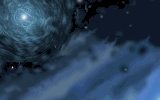
Other NewsOnly Sites:
Politics
Blue State News Only
Red State News Only
Sports/Fitness
Olympics News Only
Golf News Only
Sailing News Only
NASCAR News Only
Skiing News Only
Yoga News Only
Cricket News Only
Horseracing News Only
Rugby News Only
Tennis News Only
Science/Technology
VoIP News Only
Nanotechnology News
Hybrid Car News Only
Environmental News Only
Lasik News Only
Skin Cancer News Only
Physics News Only
Space News Only
Data Recovery
Web Hosting
Finance
Mortgage News Only
Insurance News Only
Health
Health News Only
Life
Wine News Only
Travel News Only
Gardening News Only
Cooking News Only
Drink Recipes Only
Ten Dollar Tastings
Entertainment News
Alternatives
Paranormal News Only
|
|
The
latest topic specific space news, from the most reliable sources, all in one place.
|
|

